Motor Control- Quiz 3
1/89
There's no tags or description
Looks like no tags are added yet.
Name | Mastery | Learn | Test | Matching | Spaced |
|---|
No study sessions yet.
90 Terms
what is a motor skill?
a task that has a specific purpose or goal to achieve
what is a motor action?
same as a skill (more common in motor learning research)
what is a movement?
behavioral characteristics of specific limbs or a combination of limbs that are component parts of a motor skill
what distinguishes movements from skills?
1) people learn movements especially when the begin to learn or relearn motor skills. people move in different ways to complete the same skill
2) people adapt movement characteristics to achieve a common goal. people differ in physical feature that limit movements
3) people evaluate motor skill performance and movements with different types of measures. skill and movement are measured differently
what is the difference between gross and fine motor skills?
based on the size of the musculature required
-fine: writing and buttoning a shirt
-gross: walking, running, jumping
what is the difference between continuous and discrete (and serial) motor skills?
based on the specificity of where movements of a skill begin and end (serial movements: a string of discrete movements)
-discrete: hitting a piano key one time
-continuous: steering a car
-serial: playing a song on the piano
what is the difference between an open and closed motor skill?
based on the stability of the environmental context (environmental context: supporting surface objects involved, other people)
-if all environmental context are stationary, then closed
-is any of the environmental context is moving, then open
-closed: walking down a hallway with no people
-open: hitting a volleyball
gentiles taxonomy
facilitates progression of teaching based on complexity of the movement situation
what are the two dimensions of gentiles taxonomy?
1) environmental context
2) function of the action
what are regulatory conditions?
characteristics in the environment that influence how the action is carried out
-"is the environment stationary or in motion?"
-ex: walking on a sidewalk vs in a river
what is internal variability?
regulatory conditions (environment) that affect performance from trial to trial
-"is there variability in the environment from trial to trial?"
-juggling ping pong balls in classroom vs outside on a windy day
example of stationary regulatory condition
walking on a sidewalk
example of in-motion regulatory conditions
walking on a treadmill
example of low internal variability
driving range
example of high internal variability
hitting a baseball from a pitcher
what is body orientation?
body stability vs body transport
-"is the body changing position or location?"
-walking vs standing
what is object manipulation?
are you manipulating a object
-using a racquet to hit a tennis ball
example of body stability
walking on a treadmill
example of body transport
walking outside
example of object manipulation
holding a book
example of no object manipulation
holding nothing
example of a skill that would be the most complex in gentiles taxonomy
walking in a crowded mall while carrying a baby
what are the practical applications of gentiles taxonomy?
1) evaluation of movement capabilities and limitations
2) selection of a progression of functionally appropriate activities
3) charting individual progress
what is a motor ability?
an ability that is specifically related to the performance of a motor skill
what aspects can contribute to the development of a motor ability?
-genetic contribution
-motivation (intrinsic and extrinsic)
-neurological differences (developmental readiness, aging, disease, damage)
-learning style (visual, auditory, kinesthetic)
what does the general motor ability hypothesis state?
-all motor abilities are highly related to each other
-a person can be described as having an overall amount of general motor ability
-"good at everything"
what does the specificity of motor abilities hypothesis state?
-all motor abilities are relatively independent
-a person's motor ability can be described only by a profile of amounts of each for several specific motor abilities
-"find what you're good at"
what hypothesis is supported by research?
specificity of motor abilities
fleishman's perceptual motor abilities and examples
-multi limb coordination: playing an organ with hands and feet
-control precision: operating a mouse
-response orientation
-reaction time: stoplight
-speed of arm movement
-rate control
-manual dexterity
-finger dexterity: buttoning a shirt
-arm-hand steadiness: playing operation
-wrist/finger speed
-aiming
fleishman's physical proficiency abilities and examples
-static strength: mvc against a non-moving object
-dynamic strength: amrap situps in a min
-explosive strength: amrap situps in a min
-trunk strength: amrap situps in a min
-extent flexibility
-dynamic flexibility: amrap situps in a min
-gross body coordination
-gross body equilibrium
-stamina
additional motor abilities and exmaples
-static balance: playing correct note on piano
-dynamic balance: running and kicking a ball
-visual acuity: playing correct note on piano
-visual tracking: running and kicking a ball
-eye hand or eye foot coordination: running and kicking a ball
why is evaluating motor abilities useful?
-predict future performance
-evaluate performance
-evaluate effectiveness of an intervention
-evaluate rehabilitation progress
-evaluate motor development
what is a performance outcome measure?
a category of a motor skill skill performance measurement that indicates the outcome or result of performance of a motor skill
-"how far? how fast? how much error?"
what is a performance production measure?
a category of a motor skill performance measurement that indicates the performance of specific aspects of the motor control system during the performance of an action
-kinematics, EEG, EMG
what is the difference between kinematic and kinetic measures?
kinematics: displacement (position), velocity (speed), acceleration (change in velocity)
- linear or angular
kinetics: force
-internal and external
-joint torque for the effects of force on rotation
what is an EMG and what does it measure?
-electromyography
-measures muscle activity
-bipolar (remove noise)
what are some brain activity measures?
EEG (electroencephalogram)
MRI (Magnetic resonance imaging)
MEG (Magnetoencephalography)
TMS (transcranial magnetic stimulation)
PET (positron emission tomography)
what are the performance outcome measures for space?
-distance (throwing discuss, long jump): how far/high
-end point accuracy (throwing a dart/horseshoes): how accurate
-trajectory accuracy (handwriting/balance beam): continuous skills
what are the performance outcome measures for time?
-reaction time (RT): from onset of stimulus to onset of movement
-movement time (MT): from onset of movement to completion of movement
-response time: RT + MT
-temporal activity: visual cues, how accurate (walking through a revolving door)
what is reaction time?
from onset of stimulus to the onset of movement
what is response time?
reaction time + movement time
what is movement time?
when you start the movement to when you end the movement
what are the different types of reaction time?
-simple RT (no choice): sprinter at the beginning of a track meet
-choice RT (multiple choice): driving a car and coming to a stoplight
-discrimination RT (go or no go): avoiding an object while running
premotor and motor time is derived from ____
EMG
premotor and motor time make up what?
reaction time
what is premotor time?
the period of time between the onset of the "go" signal and the beginning of muscle activity (EMG)
-an indicator of decision-making activity
what is motor time?
the period of time from the increase in muscle activity until the beginning of observable movement
-needed to overcome the inertia of the limb after the command
what is error?
-measure accuracy (spatial and temporal)
-provides a way to evaluate consistency and bias
-consistency problems indicate a lock. of acquiring the movement pattern
-bias problems indicate difficulty in adaption
what is constant error?
measure bias
-overshoot or undershoot
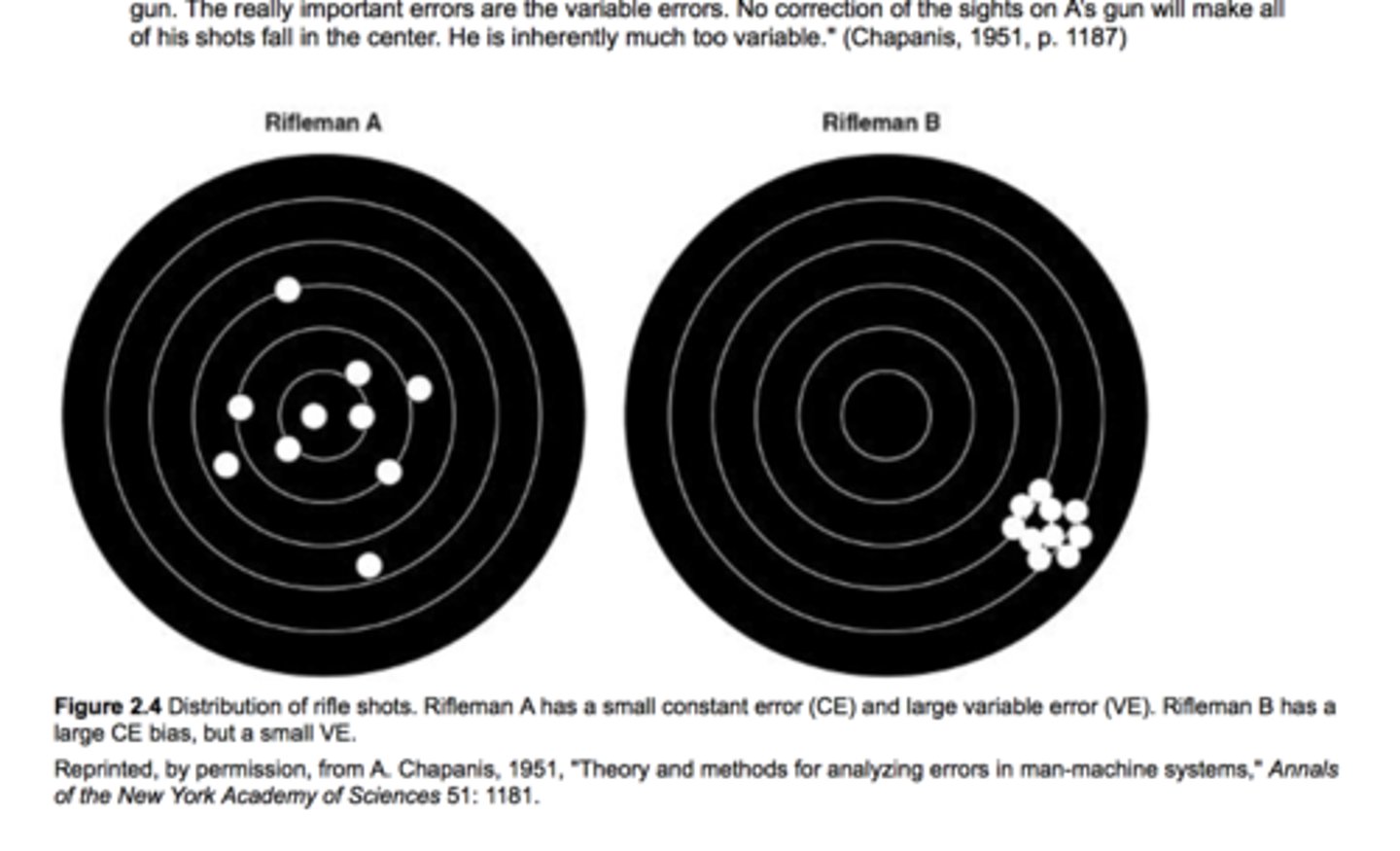
what is absolute error?
measures magnitude
-average distance from the target
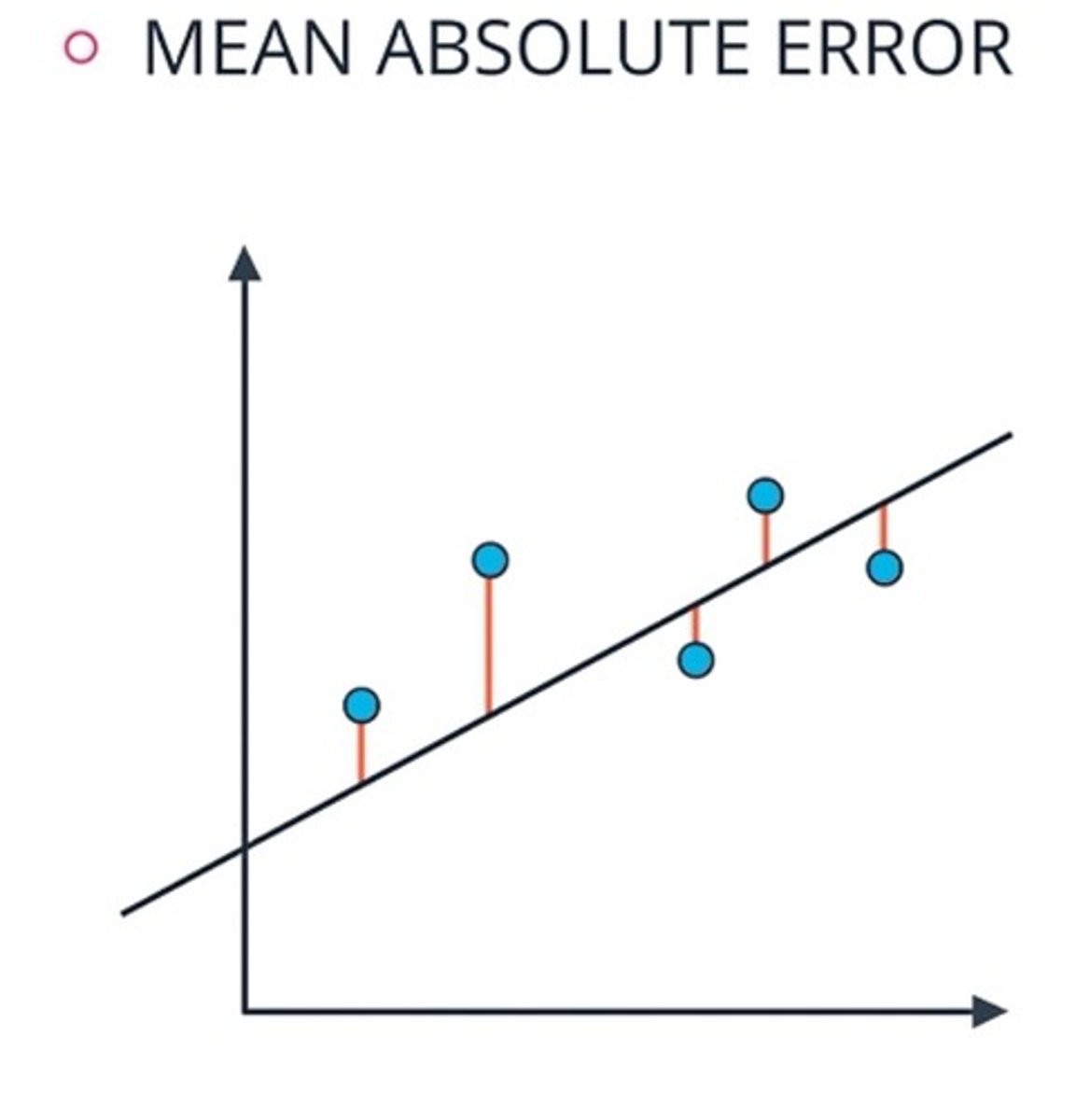
what is variable error?
scatter
-how spread out misses are
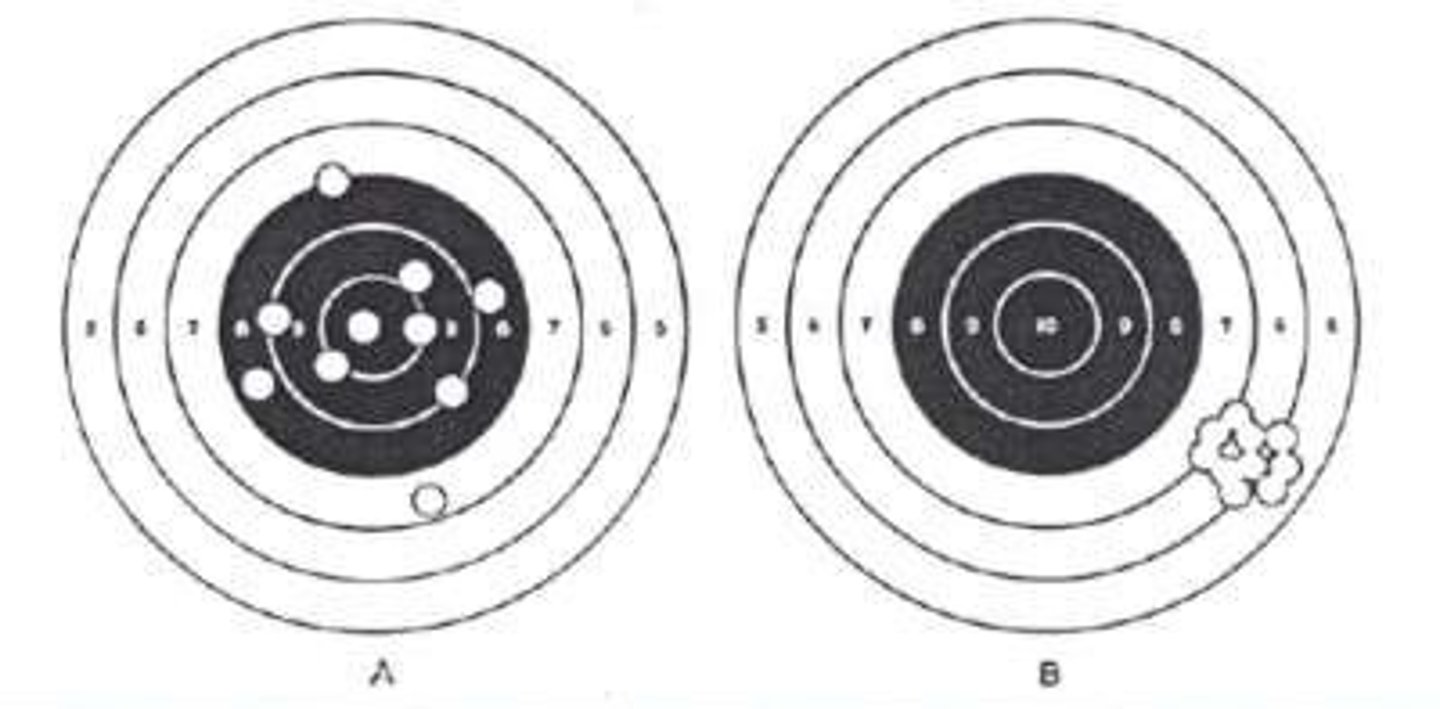
what are the types of error for two-dimension movements and for continuous skills?
two-dimension
-radial error (RE)
-hypotenuse of right angles
continuous skills
-root mean square error (RMSE)
-error in pathway
-"follow dot on a screen, how close to the line you are"
what are the three phases of information processing?
-stimulus identification
-response selection
-response programming
when do the phases of information processing occur?
during premotor time
premotor time involves ____ processes
central
motor time involves ____ processes
peripheral
a longer reaction time means that the performance is ____
slower/worse
task and situational characteristics
advance information, stimulus modality and intensity, number of choices (Hick's law), response predictability, stimulus-response compatibility, foreperiod length, movement complexity, movement accuracy, practice/repetition, timing regularity between cues
advance information
information before the go cue (when you see a certain color clap)
stimulus modality and intensity
type of stimulus (auditory or visual)
number of choices (Hick's Law)
simple RT, choice RT, discrimination RT (increase choices=increase RT)
response predictability
cost-benefit trade off (cue changes=change in RT)
stimulus-response compatibility
response selection (match cue=faster RT)
foreperiod length
"get ready, go", the longer the get ready, can affect the go (anticipation)
movement complexity
RT increases as complexity of the action increases
movement accuracy
RT increases as movement accuracy demands increase
practice/repetition
increase practice=decrease in RT
-faster on subsequent attempts as long as they are the same
timing regularity between cues
when timing is regular/predictable, the faster the response is
what is the psychological refractory period (PFP)?
reaction to a second stimulus is delayed
-want to reduce the PFP
explain how the following characteristics can affect reaction time?
1) alertness/vigilance
-warning tones (keep warning period short)
-"yellow light=start to slow down"
2)attention
-sensory set vs motor set
-detect senses prior to movement and then the programming of movement
-decrease RT
3) anticipation
-bypass waiting for a signal
-"waiting for signal to turn green after crosswalk signal end"
-simple RT or choice RT
what is prepared before opening a door?
-postural organization
-limb movement characteristics
-object control movements
-sequencing of movements
-movement rhythmicity
according to the Bereitschaftspotential, what brain area is associated with premotor time?
supplementary motor area (SMA)
what brain area is associated with motor time?
primary motor cortex (M1)
what is coordination?
the patterning of head, body, and limb movement relative to the patterning of environmental objects and events
what factors influence coordination?
- relationship of head, body, and/or limbs
- skill level
- specific point in time
- environmental context
is coordination motor ability?
NO
what is degrees of freedom?
the number of muscles/joints used to complete a task
-792 muscles
-100 joints
how do degrees of freedom change?
change through practice and progress from a beginner to a skilled performer
what factors influence degrees of freedom?
learning
explain open loop control.
movement control center --> movement instructions --> movement effectors
-no feedback
-ex: throwing a dart one time
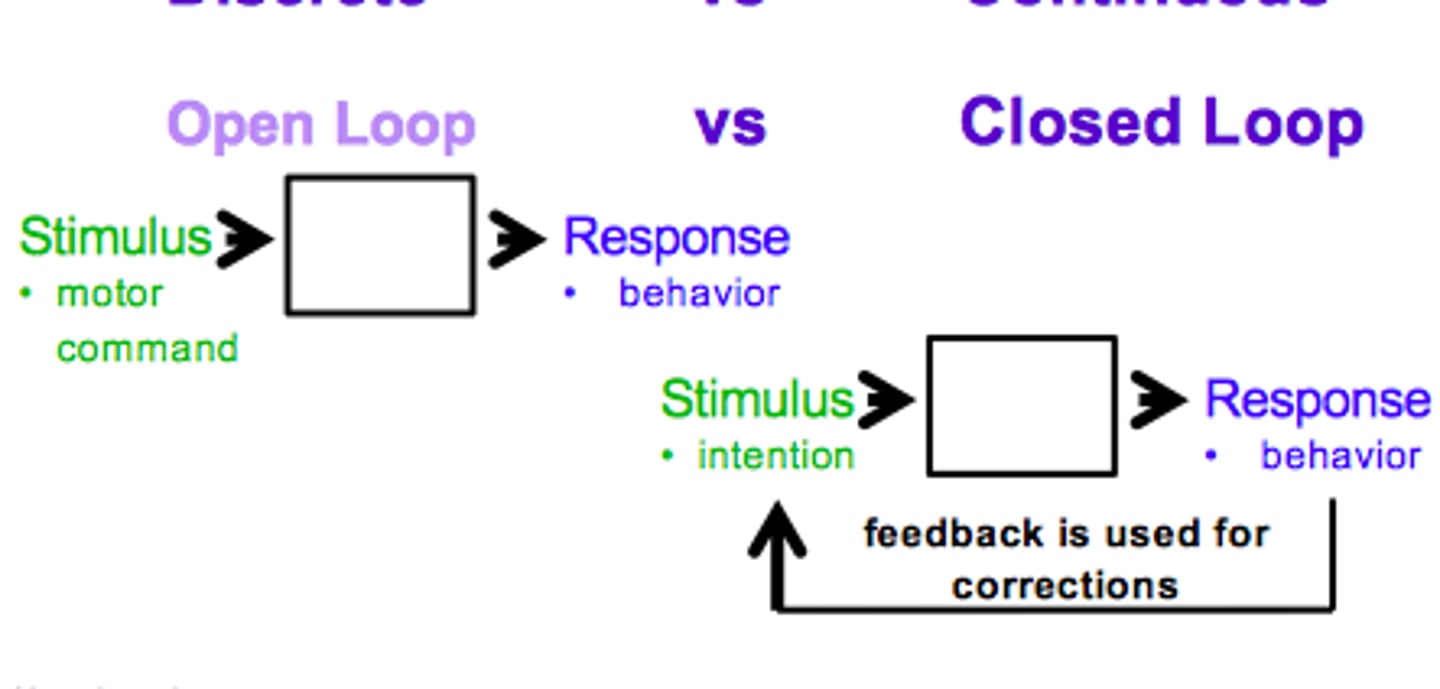
explain closed loop control.
-there is feedback with movement instructions
-environmental change is feedback
-ex: driving a car
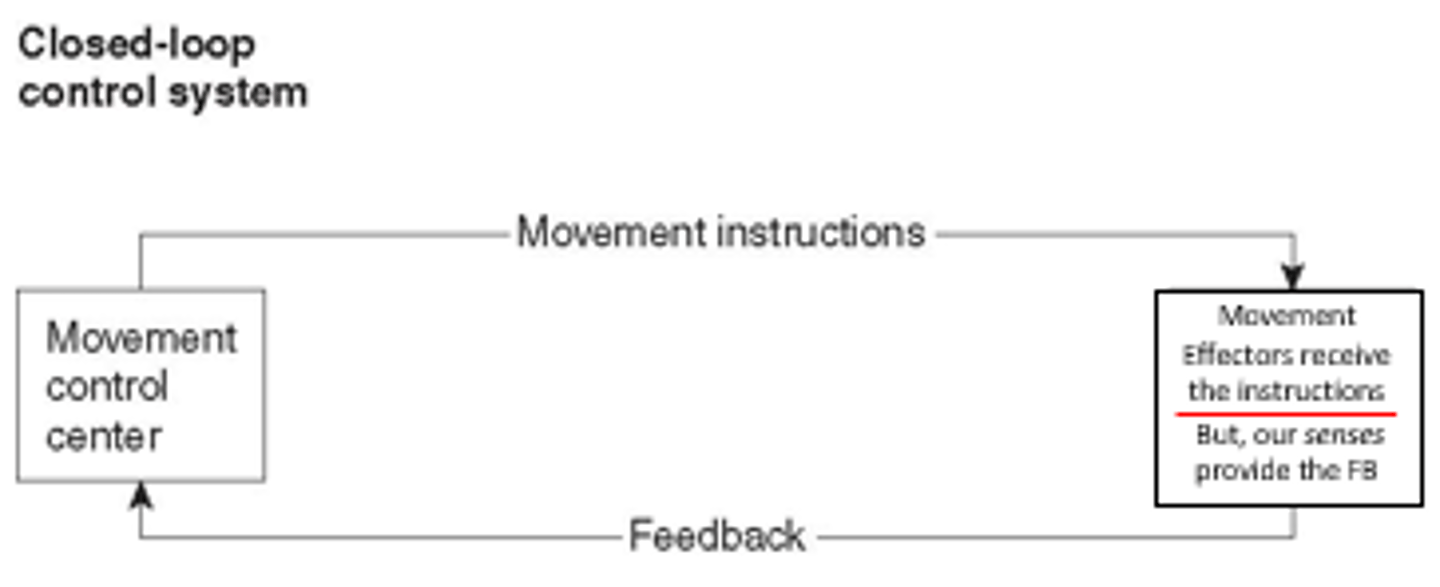
does open or closed loop control include feedback?
closed-loop
give examples of open and closed motor skills with open and closed loop control
open motor skills with closed loop control
-driving a car (feedback the entire drive)
what is a motor program?
pre-structured sets of motor commands that are constructed at the highest cortical levels and are conveyed to the lower centers in the hierarchy
what are the potential problems with having a single motor program for every movement?
-storage: one program per movement?
-generating unique movements
-diminished role of sensory feedback
what is the generalized motor program (GMP)?
one program for a class of movements
-throwing a ball (doesn't matter what type of ball)
what is motor equivalence?
the capacity of the motor control system to enable a person to achieve an action goal in a variety of situations and conditions
-must be the same task
--painting with hands vs feet
--playing volleyball on different surfaces
what are invariant features?
a unique set of characteristics that does not vary
-ex: writing name with both hands
--relative force of muscle
--relative timing of joint movements
--ordering of muscle activation
what are parameters?
features that are varied or added to meet the demands of the environment
-ex: writing name with both hands
--overall force generated
--overall movement time
--individual muscles involved
what is a schema and how does it relate to the general motor program?
a set of rules that serves to provide the basis for a decision
-what do you do when a basketball vs soccer ball is thrown at you
--catch basketball
--soccer ball hits your feet (no hands)